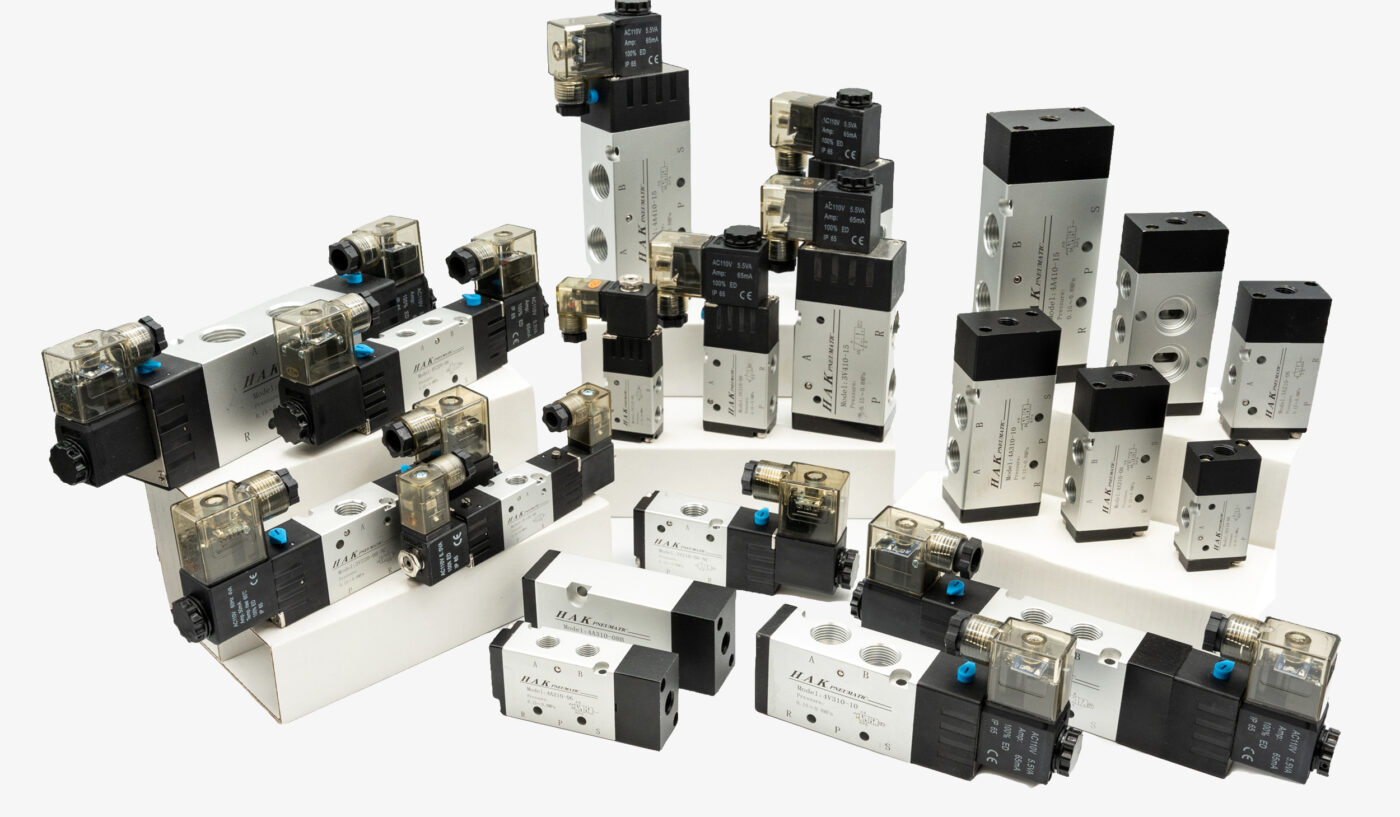Pneumatic control systems are crucial in automation, offering reliable and efficient solutions for various industrial processes. As automation revolutionizes various industries, comparing and evaluating different pneumatic control systems becomes increasingly important. This comparative analysis allows engineers, manufacturers, and decision-makers to make informed choices regarding selecting the most suitable control system for their specific automation requirements. Now, let’s delve into the world of pneumatic control systems for automation, exploring their components, advantages, and applications.
Pneumatic System Components
Pneumatic systems consist of various components that work together to generate, control, and utilize compressed air. These components include a compressor, pneumatic directional control valve, air receiver tank, pneumatic actuators, tubing and fittings, pressure switches and sensors, and control devices.
Types of Pneumatic Control Systems and Differences between them:
Pneumatic control systems offer a reliable and efficient solution for automation in various industries. Understanding the different types of pneumatic control systems and their differences is essential when selecting the appropriate method for specific applications. Let's explore these types and their distinguishing features in more detail.
Direct Acting Valves:
Direct-acting valves are the simplest type of pneumatic control system. In this system, the actuator is directly controlled by the valve itself. One key advantage of direct-acting valves is their fast response time, making them suitable for applications that require quick actuation. However, they have limited load-handling capabilities and lower flow rates than other control systems.
Pilot-Operated Valves:
Pilot-operated valves consist of a pilot valve and a central valve. The pilot valve controls the airflow to the main valve, which controls the actuator. This arrangement allows pilot-operated valves to handle larger loads and provide higher flow rates. Although they have slightly slower response times than direct-acting valves, their ability to handle more demanding tasks makes them well-suited for applications requiring greater force or flow.
Solenoid Valves:
Solenoid valves are another popular type of pneumatic control system. They employ an electromechanical solenoid to control the flow of air. Solenoid valves offer precise control and rapid actuation, making them versatile and widely used in different automation scenarios. They come in different variations, such as 2-way and 3-way valves, and can be designed for normally open or normally closed configurations, providing flexibility for other application requirements.
Each type of pneumatic control system has its unique characteristics and advantages.
Here's a summary of the key differences between them:
- Operation: Direct-acting valves control the actuator directly, while pilot-operated valves utilize a pilot valve to maintain the main valve, which controls the actuator. Solenoid valves employ an electromechanical solenoid to control the airflow.
- Response Time: Direct-acting valves have the fastest response time, while pilot-operated valves have slightly slower response times. Solenoid valves offer rapid actuation and precise control.
- Load Handling and Flow Rates: Direct-acting valves have limited load-handling capabilities and flow rates. Pilot-operated valves can handle larger loads and provide higher flow rates. Solenoid valves are versatile and can be used in applications with varying load requirements.
- Complexity: Direct-acting valves are the most straightforward pneumatic control system, while pilot-operated valves are more complex due to their additional components. Solenoid valves can vary in complexity depending on their design and configuration.
- Application Suitability: Direct-acting valves are suitable for smaller-scale applications that require fast response times. Pilot-operated valves are ideal for more demanding tasks and applications that require higher force or flow. Solenoid valves are versatile and commonly used in various automation scenarios.
Tips to Troubleshoot Pneumatic Systems
However, like any mechanical system, pneumatic systems can encounter issues that disrupt their functionality. Here are some helpful tips for troubleshooting pneumatic systems.
- Review the system documentation: Familiarize yourself with the system's design, specifications, and operating principles. Understand the various components and their interconnections.
- Conduct a visual inspection: Inspect the system for any obvious signs of damage, such as leaks, loose fittings, or worn-out components. Look for signs of excessive wear or corrosion.
- Check air supply: Ensure the compressed air supply is sufficient and within the required pressure range. Check for proper filtration and moisture removal.
- Inspect pneumatic lines: Examine the pneumatic lines for leaks, blockages, or restrictions. Use soapy water or a leak detection spray to identify air leaks. Inspect fittings, connectors, and valves for proper tightness.
- Examine pneumatic components: Check pneumatic cylinders, actuators, valves, and other components for proper operation. Look for signs of wear, such as damaged seals or misalignment. Ensure that all components are correctly lubricated.
- Verify electrical connections: If the system incorporates electrical controls, inspect the wiring connections, switches, relays, and solenoid valves. Ensure that all electrical connections are secure and functioning correctly.
- Consult manufacturer documentation or support: If you encounter difficulties in troubleshooting or identifying the root cause, refer to the system's manufacturer documentation or contact their technical support for assistance. They can provide guidance specific to your system and troubleshoot complex issues.
Selecting the right pneumatic control system for automation is a critical decision that can significantly impact the performance and efficiency of your operations. With various options available, navigating the complexities and making an informed choice can be challenging. As technology advances, pneumatic control systems will evolve with innovations and improvements. It's crucial to stay updated with the latest developments and periodically reassess your automation requirements.

